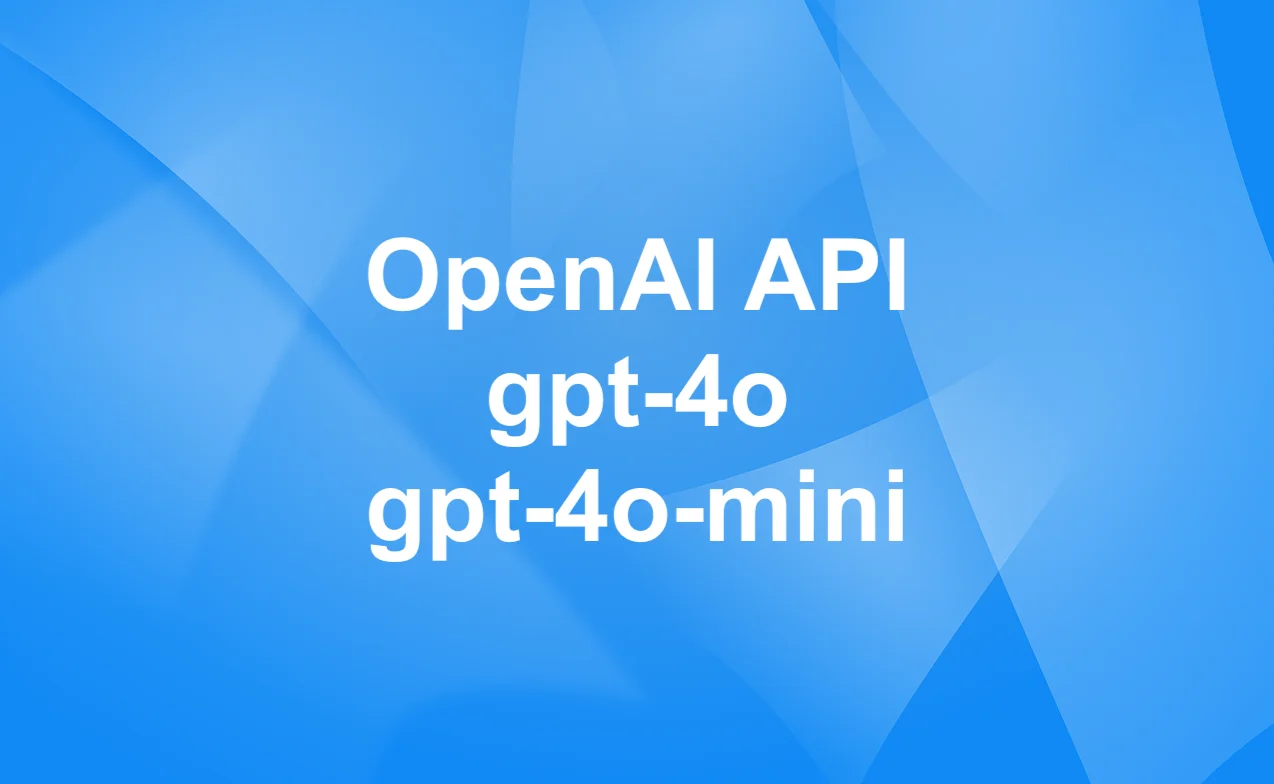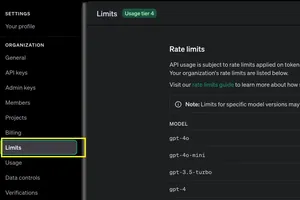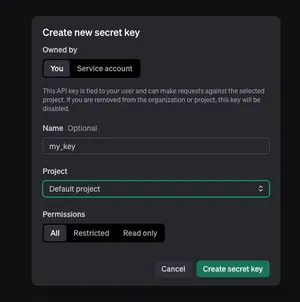OpenAI's GPT-4o and GPT-4o-Mini models offer distinct advantages in terms of performance and cost, catering to various application needs. This article provides an in-depth comparison between these two models, focusing on their capabilities, pricing, and ideal use cases. By the end of this article, you will have a better understanding of which model aligns with your business, research, or development needs.

1. Overview of GPT-4o and GPT-4o-Mini
What is GPT-4o?
GPT-4o ("Omni") is OpenAI’s latest flagship model, designed to provide high-quality responses with improved efficiency. It is a multimodal model, capable of processing and generating text, images, and audio with superior intelligence and accuracy. GPT-4o is suitable for complex applications such as research, content generation, and AI-driven problem-solving.
What is GPT-4o-Mini?
GPT-4o-Mini is a scaled-down version of GPT-4o, optimized for cost efficiency while maintaining reasonable response quality. It is targeted at applications requiring lower latency and budget-conscious AI usage. Though not as advanced as GPT-4o, GPT-4o-Mini still provides competitive performance for many common AI tasks, making it an attractive option for startups and businesses looking to integrate AI while keeping costs manageable.
2. Performance Comparison
| Feature | GPT-4o | GPT-4o-Mini |
|---|---|---|
| Model Size | Large multimodal model | Distilled, smaller version of GPT-4o |
| Capabilities | Processes and generates text, images, and audio | Primarily focused on text processing and generation |
| Speed | High performance with longer processing times | Faster processing due to smaller model size |
| Accuracy | Superior reasoning and understanding for complex tasks | Adequate for simpler tasks with less emphasis on deep reasoning |
| Multilingual Support | Extensive support for multiple languages | Limited to more common languages |
| Context Length | Longer context handling capabilities | Shorter context handling capabilities |
| Fine-tuning | Supports extensive fine-tuning for specialized applications | Limited fine-tuning capabilities |
GPT-4o excels in handling complex tasks that require deep understanding and reasoning, making it suitable for applications such as advanced AI assistants, research, and multilingual chatbots. In contrast, GPT-4o-Mini offers faster processing and is more cost-effective, making it ideal for applications like e-commerce chatbots, automated responses, and AI-powered productivity tools.
3. Cost Comparison
Pricing is a significant factor when choosing between GPT-4o and GPT-4o-Mini. The following table provides a breakdown of the costs associated with each model:
| Model | Input Token Cost (per million tokens) | Output Token Cost (per million tokens) |
| GPT-4o | $2.5 | $10 |
| GPT-4o-Mini | $0.15 | $0.6 |
Note: Actual pricing may vary based on OpenAI’s pricing policies and usage volume.
GPT-4o-Mini offers a more cost-effective solution, especially for applications that require processing large volumes of text but do not need the advanced capabilities of GPT-4o.
4. Ideal Use Cases
GPT-4o: Best for High-Performance AI Applications
GPT-4o is ideal for businesses and developers who require:
- Complex Reasoning Tasks: Advanced AI-powered problem-solving, including technical research and scientific applications.
- Content Generation: Long-form content writing, creative storytelling, and high-quality article generation.
- Multilingual Applications: Support for multiple languages in customer service, translation, and international AI tools.
- AI-Powered Assistants: Virtual assistants that require deep contextual awareness and long-term memory handling.
- Legal and Financial Analysis: AI-driven document summarization and compliance checking in professional sectors.
GPT-4o-Mini: Best for Speed and Cost Efficiency
GPT-4o-Mini is best suited for:
- High-Speed Processing: Applications requiring quick turnaround, such as real-time chatbots and customer support systems.
- Budget-Sensitive Applications: AI solutions for startups or businesses with constrained AI budgets.
- Simple Conversational AI Tasks: Handling common customer queries and support requests efficiently.
- E-commerce Chatbots: AI-driven sales assistants that provide product recommendations and customer support.
- FAQ and Documentation Automation: Automating repetitive tasks like summarizing user manuals and answering common inquiries.
5. Real-World Applications
GPT-4o in Action
- AI-Powered Research: Universities and research institutions use GPT-4o for summarizing papers, conducting literature reviews, and even generating hypotheses.
- Advanced Virtual Assistants: Businesses deploy GPT-4o-based AI chatbots that understand nuanced customer requests, making interactions feel more natural and intelligent.
- Professional Writing and Editing: Companies use GPT-4o to draft reports, analyze legal documents, and create high-quality marketing materials.
GPT-4o-Mini in Action
- Retail Chatbots: Online stores integrate GPT-4o-Mini into their support systems to answer basic questions, provide product recommendations, and assist with order tracking.
- Social Media Management: Companies use GPT-4o-Mini for generating social media posts, responding to customer queries, and managing brand engagement.
- Automated Ticketing Systems: Businesses in customer service use GPT-4o-Mini to triage support tickets, reducing wait times and improving efficiency.
6. Conclusion
Both GPT-4o and GPT-4o-Mini offer valuable capabilities tailored to different application needs. GPT-4o provides advanced performance suitable for complex tasks, while GPT-4o-Mini offers a cost-effective and efficient alternative for simpler applications.
If your organization requires deep reasoning, multilingual support, and high-quality text generation, GPT-4o is the better choice. However, if you prioritize cost savings and fast processing for basic AI functionalities, GPT-4o-Mini is the ideal solution.
By understanding the strengths and limitations of each model, you can make an informed decision that aligns with your project's requirements and budget.






